What’s Your Most Memorable Textbook?
We asked our PF Advisors to tell us their most memorable or influential textbook and why. Here are their responses…
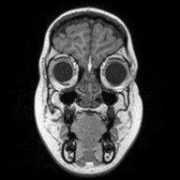
The first textbook that made a significant impact on me was Siegman’s “Lasers”. I took the course senior year of undergrad, and I can still vividly recall the moment (when we covered Chapter 9) when I decided to switch graduate studies from nuclear physics to optics. I still have the textbook and had it signed by Tony!
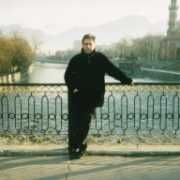
My favorite book which influenced mathematics the most is Arithmetics by Diophantos of Alexandria Volume VI and Arithmetic Arrangements Part I. The book itself ranks probably very low on a list of prominent books, if there wasn’t its most prominent reader Pierre de Fermat (1607-1665) who commented one equation.
“On the contrary, it is impossible to divide either a cube into two cubes, or a double square, or in general any power greater than the square into two powers of the same degree: I have discovered a truly wonderful demonstration that this margin is too narrow to hold.”
This remark basically established entire branches of mathematics, number theory being just one of them. It lasted 3½ centuries until Andrew Wiles really could provide a wonderful demonstration in 1994. Learning to read his proof alone, would equal a study of mathematics.
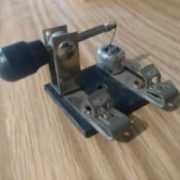
It may not qualify as a conventional textbook by the true definition but a set of encyclopedias in my childhood definitely had a significant effect. When I think about the time spent with my nose in an encyclopedia I have to think about closing the book up and being dissatisfied. There is only so far that those books would go in explaining what I wanted to know. It was never enough. But the seeds were planted and I would go about my daily life observing what the world had to offer trying to put it all together with what those books had told me. Today’s kids don’t have that. They can watch YouTube, etc until they can no longer see straight. There is virtually no end to what info is available. When the laptop gets slammed shut chances are their interest in whatever they were watching goes away as well.
Conceptual Physics. Paul Hewitt.
Inspired students to think about the Physics, and just use the Maths to calculate the second and third decimal place of the answer.
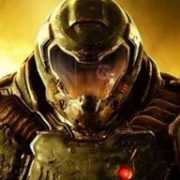
The most influential textbook is the one you pick up and read because you want to, not because you have to.

While I would not call it my favorite text, Masterton and Slowinski’s Chemical Principles stands out in my mind for one thing. A paragraph on wave/particle duality begins, “In 1924 a young French physicist, Louis de Broglie, reasoning as physicists do, sometimes with strikingly successful results . . .” While I am fairly sure it was intended to be humorous, this opened my eyes to the disdain some physicists hold for mathematicians, chemists for physicists, and I suppose, if the pattern holds, biologists for chemists. A short-sighted and self-limiting attitude, in my opinion.
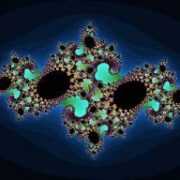
Ahlfors: “Complex Analysis”
It is so well-written that I find myself re-reading parts of it just for the fun of it.
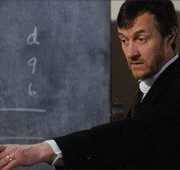
Easy call for me: although not strictly speaking a textbook, Einstein’s “Relativity: The special and general theory”

The book that comes first to my mind is a computer science textbook: Structure and Interpretation of Computer Programs, by Hal Abelson and Gerald Jay Sussman. It uses Scheme, a dialect of LISP. One of my students and I used it for an individual directed-study course about 25 years ago. We both had a lot of fun doing it. I’ve never done any Scheme/LISP programming since then, but their style has influenced my programming since then.
Available as a download from MIT: http://web.mit.edu/alexmv/6.037/sicp.pdf and in print from various places.
It’s hard to pick out just one book. But I suppose that I regard Bondi’s “Relativity and common sense” the most fondly. It’s an old book, available on the <<internet archive>>. Using only high-school algebra, it gives a mathematical treatment of Einstein’s theory of special relativity. There are other more modern (and more advanced) treatments of special relativity, in particular, Taylor & Wheeler’s “Spacetime physics”. But I’m more fond of Bondi’s book, its accessibility at the high school level made it the first book on the topic I read.
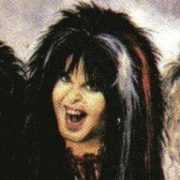
I like the “high school” level handbooks. They are the ones that get you interested in science in the first place and they make understanding the most fundamental stuff – often too theoretical – more easily.
I really appreciated my Auto Math Handbook and Radio Shack used to sell those Engineer’s Mini-Notebooks that were filled with incredibly valuable information that was incredibly easy to follow.

The textbook that was most influential for me was Viscous Fluid Flow by Frank M. White. I took a viscous fluid flow course using this text as a senior undergraduate, and it was really the class that set me on the path to research, graduate school, and ultimately a tenure-track faculty position. The book clearly covered a range of topics that were of great interest to me and to this day serves as a very useful handbook for working in the field.
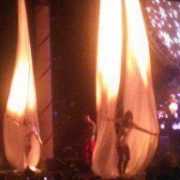
Jackson, although I think it is dated, it is a right of passage for the practicing physicist. Written for the budding accelerator physicist, it is really a mathematical methods book disguised as a Classical Electrodynamics text.
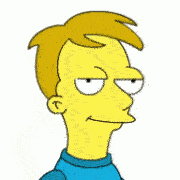
Donald A. McQuarrie’s Quantum Chemistry. It was my introduction to the world of quantum mechanics, so it basically shaped my entire professional life. I remember working on problems with some classmates, learning about wave functions, and trying to figure out what it all meant.
“Microelectronic Circuits” by Sedra and Smith was eye-opening for me. The step-by-step approach and comprehensive scope of the text made Analog Electronics seem at once limitlessly vast and yet strangely accessible. They start from the beginning, focusing on components, and through increasingly detailed and challenging examples, they take you to reasonably sophisticated circuits and concepts. 25 years later I still crack open this text every view weeks to look up the details on some topic or other. A fantastic book.
When I entered college I took a class for which Richard Courant’s Calculus book was used. On p.27, there was a footnote that showed how to derive all formulas for the sum of the kth powers of integers from 1 to n, for any k. Before this I had seen only the Gauss formula for the sum of the first power of the integers from 1 to n, so this blew my mind. There was more mathematical content in that footnote than in a whole year of my high school math classes. I knew I wasn’t in high school any more.
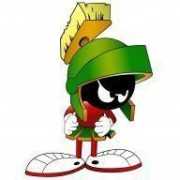
Taylor & Wheeler’s Spacetime Physics got me interested in relativity while I was still in high school. During a summer program I got to take a class in special relativity using this textbook, and I was hooked. Part of it was learning about an aspect of physics that isn’t really discussed in high school (or at least it wasn’t when I was in high school); even the high school physics class I took the following year was all about Newtonian physics.
But even more than that, I was drawn by the book’s method of teaching: it presented SR as a logical structure, not as a jumble of facts or rules to be memorized by rote, and its exercises made you think, not just turn the crank. One exercise I remember particularly had an adult, Mr. Van Dam, raising a number of objections to relativity, and you were asked to explain to him why his objections were wrong. What a great way to test whether you really understand the material!
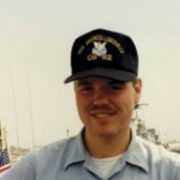
When I was taking the electricity and magnetism college Physics course, our study group was working through some homework. After showing a fellow student how I would solve work through the problem, he said “where did you learn that way?” I told him that I had learned it in the Navy.
The Navy Electricity and Electronics Training Series (NEETS for short) are not textbooks like you normally might think. They are a series of 24 books (called modules) that the U.S. Navy developed to help sailors entering into electricity and electronics related fields learn the fundamentals of how electricity works, and how devices, which use electricity, work. They are easy to read and are formatted as self study material, which can even be used as correspondence courses for Navy personnel. They are released for used by the public. And the best part is they are free. Davidson College Physics department has them hosted on their site as PDF files.

Dr. Dubin’s textbook on Rapid Interpretation of EKGs. He made it easy enough for a middle schooler to understand.
Molecular Biology of the Cell. I don’t know exactly why, but this was the first text book I ever actually wanted to read. To just sit there and read and enjoy. It was well put together, engaging and interesting. https://www.molbiolcell.org/
Purcell, Electricity and Magnetism (Berkeley Physics Series Vol 2)
I used Purcell back in undergraduate E&M and it was clear and accurate, with good illustrations and some tough problems thrown in. I recall the illustrations of Gauss’s and Stokes’s theorems for divergence and curl which have stuck with me.
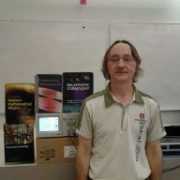
Two books that influenced as an undergraduate student were Goldstein’s “Classical Mechanics” in physics, and Munkres’ “TOPOLOGY: A First Course” in math.
In third-year, we had to take two semesters of Classical Mechanics, and we covered almost all of Goldstein. Seeing all the new concepts and techniques in these courses made me feel like we (the students in the programme) were finally getting deeply into theoretical physics. Examples of this new stuff included things like the calculus of variations, Lagrangians, Hamiltonians, Poisson brackets, canonical transformations, Hamilton-Jacobi theory, etc.
From my Topology course and text, I learned the beauty and power of abstract maths. A passage at the start of Munkres generated a ROFL moment for one of my friends. As an undergrad, I sometimes relied on my exam taking skills to rescue me.
Munkres:
In ordinary everyday English, the word “or” is ambiguous. For example, suppose I spoke … as follows. … “Mr. Jones, either you get a grade of at least 70 on the final exam or you will flunk this course.” … Mr. Jones would be exceedingly unhappy if both statements turned out to be true!
After gradually moving away from abstract maths for the last 20 years, I recently have found myself, somewhat unexpectedly, moving back, e.g., for the last couple of months I have been reading the Springer Grad Text in Math “Lie Groups, Lie Algebras, and Representations” by Hall.

The most important textbook for me are the Sommerfeld Lectures. This is a 6-volume set of theoretical physics, covering point-particle mechanics (vol. 1), continuum mechanics (vol. 2), electrodynamics (vol. 3), optics (vol. 4), thermodynamics and statistics (vol. 5), and partial differential equations (in physics) (vol. 6). I found them in a bookstore when I was a high-school student, starting to think about what to do after getting the “Abitur” (final examanation allowing one to enroll as a student at a university in Germany). At the time I’ve been undecided whether to do electrical engineering, math, or physics. Through the influence of my physics teacher, who was the best teacher I ever had during my entire time in school, the tendency was clearly towards physics, and she told me that I should consider theoretical physics because of my deep interest in math. In that way I looked at the theoretical physics books in the university book store of my hometown, Darmstadt. There I found these 6 little pocket books. Although written already in the late 40ies early 50ies I was immediately fascinated, although of course I lacked a lot of the math prerequisites needed to understand these books completely, but then I alreadly started to self-study one-variable calculus and then vector calculus is masterfully covered in Sommerfeld’s vol. 2. I still think these are the best theoretical-physics books covering classical physics, ever written, and it becomes completely clear why Sommerfeld “produced” more Nobel laureats among his pupils (including Heisenberg and Pauli) than any other physics professor in the history of physcis.
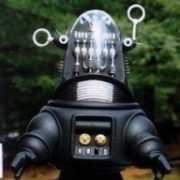
One textbook that has stuck with me over the last fifty+ years since college has been the Schaum’s Outline series book, Mathematical Handbook of Formulas and Tables. It has the most complete discussion of integral templates, coordinate systems and a host of other useful stuff, nearly everything you need to do graduate level applied math and physics. Its also quite a bargain at under $20.
Another book that I found more recently is Prof Elwes Math 1001 which is a comprehensive survey of mathematical fields with just enough commentary to get you interested in researching a particular topic.
I was also fascinated by Wheeler, Thorne and Misner’s Gravitation book and would just pour over the pages in an attempt to understand the deep concepts of General Relativity even to this day. I took an independent study on it decades ago using preprints of the book and just loved the cover art as a brilliant expression of the differences between Newton’s view and Einstein’s geometric view of the world.
Lastly, there is Arfken and Weber’s book

Ultimately it would have been Rudolf Haag’s “Local Quantum Physics”, essentially because he really strips QFT down to its bare bones, showing that neither fields nor particles are actually fundamental to its definition, nor can they be said to be ontological primitives of the theory.
I’m no longer sure what QFT is even about any more though!
Second place would be Wald’s “General Relativity”, which I feel I have to at least mention.
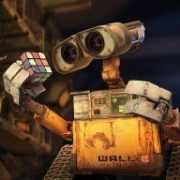
One of my favorite text books I have kept around is “Introduction to Heat Transfer,” because I vividly remember the moment in my college heat transfer class when I started to realize the design problems which could be solved by the methods we learned in that class. It was an enlightening moment; before that class I hadn’t even considered what was involved in calculating the flow of energy between a temperature difference or across a heat sink.
Thanks to all the PF Advisors that shared their favorite textbook. We have more questions for them in the near future. Stay tuned for another “Ask the Advisors”!
I have a BS in Information Sciences from UW-Milwaukee. I’ve helped manage Physics Forums for over 22 years. I enjoy learning and discussing new scientific developments. STEM communication and policy are big interests as well. Currently a Sr. SEO Specialist at Shopify and writer at importsem.com

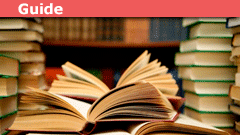


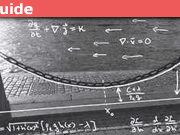
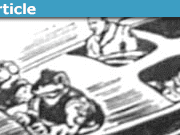
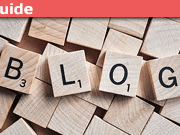

To call any serious physicist a philosopher is not very kind, and to compare Weizsäcker (clearly a philosopher, no question) with Pauli (clearly a physicist with some interest in philosophy touching even the esoteric, but clearly a physicist) is simply a joke! BTW the worst book claimed to be about physics I've ever started to read (I could stand to read about 60 pages, then I had to stop reading to avoid getting mad) was by Weizsäcker (the book was called "Einheit der Physik").I don't consider it unkind to call a phycistist a science philosopher and I don't think that Primas would have objected.
My statement about Weizsäcker and Pauli was also not meant as judging or comparing their achievements but rather pointing out the philosophic line also among the pupils of your favourite Sommerfeld.
To call any serious physicist a philosopher is not very kind, and to compare Weizsäcker (clearly a philosopher, no question) with Pauli (clearly a physicist with some interest in philosophy touching even the esoteric, but clearly a physicist) is simply a joke! BTW the worst book claimed to be about physics I've ever started to read (I could stand to read about 60 pages, then I had to stop reading to avoid getting mad) was by Weizsäcker (the book was called "Einheit der Physik").
The book which certainly influenced me most, was “Elementare Quantenchemie” by Hans Primas and Ulrich Müller-Herold. Alas, it has never been translated into english language. I read it as a high school student and learned quantum mechanics from it. Formally certainly a text book, it is one of the strangest text books I ever ran into. I learned and understood from it the Dirac formalism in quantum mechanics, although I learned practically nothing about how to solve applied problems in theoretical chemistry. Hans Primas was a professor at the ETH Zurich and the PhD supervisor of Nobel prize winner Richard Ernst. He was more a science philosopher in the tradition of von Weitzsäcker and especially Wolfgang Pauli.
While the main curriculum of the book is completely self contained and best comparable maybe to Ballentine in that it takes great care to distinguish between kinetics and kinematics and discusses the Gallilean symmetry group as a basis for quantum chemistry. On the other hand side, there are many excursions on topics which I was astonished to find in none of the supposedly more advanced (but in reality mostly of the “shut up and calculate” style) books on quantum mechanics for “real physicists” like C* algebras, superselection rules or operator theory of unbounded operators. Closest in spirit are here the books by Rudolf Haag “Local quantum physics” and John von Neumann’s “Mathematical Foundations in Quantum Mechanics”.
There are quite a few physics texts that Ive enjoyed reading over my Undergrad Career. Goldstien Classical Physics, Boas Math Physics, And Griffiths EMT were some very enjoyable reads. Some books are better read in silence at home then in a classroom setting. I haven't finished off either of these texts but by and large They've made a big impression on my undergrad career. I've currently been reading some books from the Demystified series an Schaum's Advanced Mathematics for Engineers it's been nice filling in some of the gaps that I've missed along the way. Its always fun going over some of the problems mentally.
I have no one textbook as my education is largely informal.
The most enticing math books have been in topology and differential geometry – Milnor's books Characteristic Classes, Topology form the Differentiable Viewpoint, Morse Theory, and Lectures on the H-Cobordism Theorem and Struik's book on Classical Differential Geometry.. I would agree with @Svein as well about Ahlfors' Complex Analysis because it derives the theory completely using complex analytical techniques and each theorem is elegantly presented. The book is so well written that it can be taken as an introduction to much of modern mathematics.
And there is Feller's book on probability theory especially volume 1. In some ways this may be the best math book ever.
For Physics Feynmann's Lectures and even more Leonard Susskind's Lectures are completely delicious. Feynmann loves the explanatory power of Physics. Susskind loves its conceptual frameworks. I particularly like Susskind's lectures on Classical Mechanics and his speculative lecture on "Entanglement equals gravity."
In my case it was probably "An introduction to VLSI systems" by Carver Mead and Lyn Conway (early 80s I think it was). At the time I was designing an ASIC using pencil and paper. Ended up quitting my job to work for another company.
P.R. Holland, The Quantum Theory of Motion
This is a quantum-mechanics textbook written from the Bohmian point of view, that teachs you both the standard and the Bohmian way of thinking. After reading that book (I was 32 at that time), for the first time in my life I had the feeling that now I understand QM intuitively. That book shaped a lot of my subsequent professional research on quantum foundations.
My favorite book which influenced mathematics the most is Arithmetics by Diophantos of Alexandria Volume VI and Arithmetic Arrangements Part I. The book itself ranks probably very low on a list of prominent books, if there wasn’t its most prominent reader Pierre de Fermat (1607-1665) who commented one equation.
“On the contrary, it is impossible to divide either a cube into two cubes, or a double square, or in general any power greater than the square into two powers of the same degree: I have discovered a truly wonderful demonstration that this margin is too narrow to hold.”
This remark basically established entire branches of mathematics, number theory being just one of them. It lasted 3½ centuries until Andrew Wiles really could provide a wonderful demonstration in 1994. Learning to read his proof alone, would equal a study of mathematics.@fresh_42, what is your reading list for someone who would like to understand Wiles's proof?
If I have to name a math textbook in the same spirit, it is Strogatz' "nonlinear dynamics and chaos", for the same reason. I never thought I'd find a math book I actually really enjoy reading. And I say that as a current math teacher. I used it to prepare myself for a course I'm teaching on dynamical systems.I learnt a lot from it too, and recommend it for as background for those interested in neuroscience.
I can think of a few influential books that I will always remember:
mr wizard, don Herbert
learning electronics, forrest m mimms
the radio shack blue data book
gw-basic for my 286 with a phoenix bios, dos 5.0
a book on lasers (old) that introduced my to the ruby laser at the local library
the mini-engineer notebooks at radio shack
a hagen fish keeping manual
the first robot book by Gordon mccomb
redhat Linux 7.2, (I learned how to complile!)
electronics now magazine, 4 books for a penny! and I drooled over electronics workbench software that I couldn't afford.
popular electronics magazine, my first introduction to the pic microcontroller
chaos by gleck, now I was in jail at 18 in kiddie jail, anyways that was my first introduction to any kind of real physics stuff, all these new words but at the end of that book I was talking about the book with a guard saying I want to learn classical mechanics but I'm wasn't sure if I wanted to learn quantum mechanics, when he asked me what that was I looked at him and said I don't know!
If I have to name 1 textbook, it should be Zee's "Einstein gravity in a nutshell". It's fun to read, full of all kinds of insights, very modern and up to date and hence very complete. For me the best middle road between physical intuition and mathematical rigour.
If I have to name a math textbook in the same spirit, it is Strogatz' "nonlinear dynamics and chaos", for the same reason. I never thought I'd find a math book I actually really enjoy reading. And I say that as a current math teacher. I used it to prepare myself for a course I'm teaching on dynamical systems.
The world would be a better place if more writers would take a similar attitude towards their textbook writing. With a lot of textbooks, I can only think "did you actually enjoy writing this, and if so, why can't I smell it?"
@vanhees71 was added to the list :smile:
This question even inspires a natural followup question: Now that you've heard what other people are saying, which of these will you want to take a look at for yourself? @pervect has talked me into Bondi.